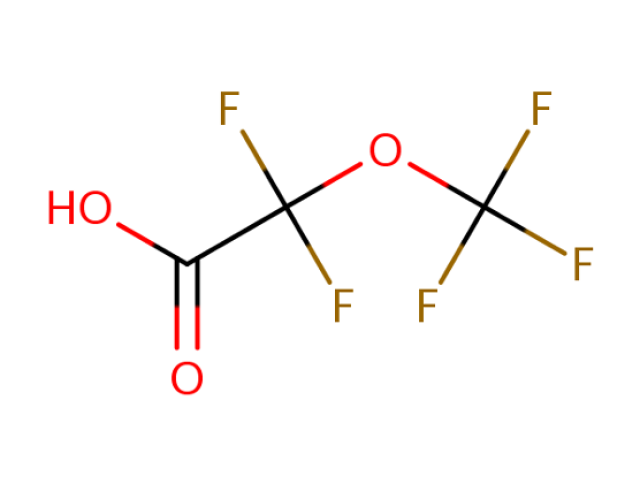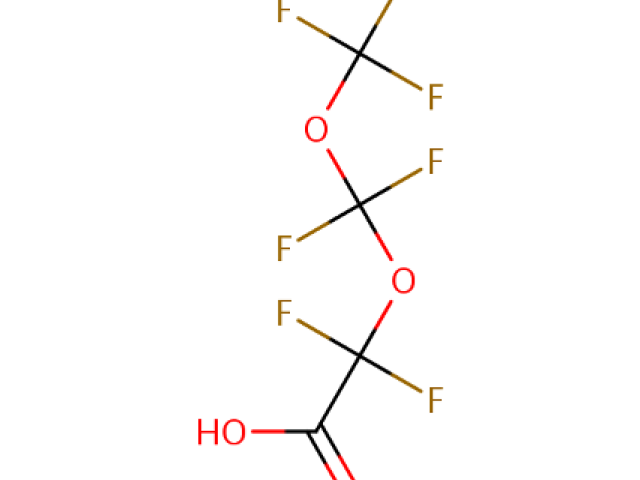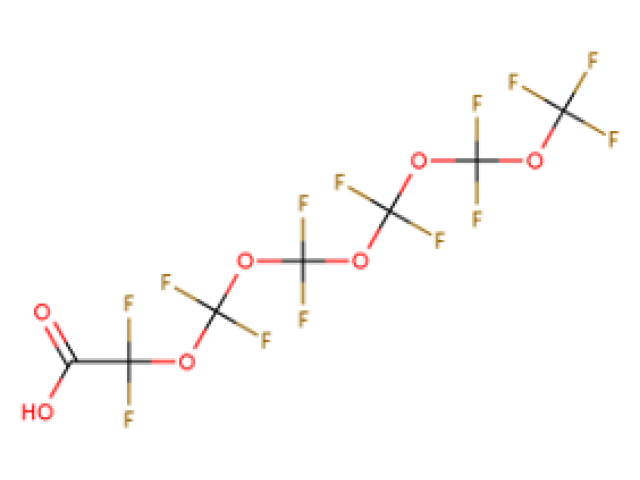
What are “forever chemicals”?
Defining what qualifies as per- and polyfluoroalkyl substances, or PFAS, is important for detecting, studying and regulating these forever chemicals.
Per- and polyfluoroalkyl ether acids, or PFEAs, are a subset of PFAS compounds, many of which were introduced to replace other PFAS such as PFOA and PFOS. These chemicals[1] include the well-known PFAS GenX and lesser known compounds such as the chlorinated perfluoroethers recently identified across the state of New Jersey.
The following analysis focuses on a subset of PFEAs that would not be considered PFAS under some definitions. Among the PFEAs released from fluorochemical manufacturing and product usage are perfluoro-2-methoxyaacetic acid (PFMOAA), perfluoro(3,5-dioxahexanoic) acid (PFO2HxA), perfluoro-3,5,7-trioxaoctanoic acid (PFO3OA), perfluoro-3,5,7,9-butaoxadecanoic acid (PFO4DA), perfluoro-3,5,7,9,11-pentaoxadodecanoic acid (PFO5DoA).
These specific PFEAs have been detected in drinking water, seafood, air emissions from professional floor waxing and human exposures from different sources have been documented.
An initial study found statistically significant shifts in immune cell populations and called for more research on the potential health consequences from exposure to PFMOAA.
A separate study on PFO3OA, PFO4DA, PFO5DoDA found thyroid hormome disruption impacts on zebrafish include swim bladder development and inflation, with the authors concluding that these PFEAs “are not safer alternatives to PFOA”.
Drinking water downstream from the Chemours plant, previously owned by DuPont in Fayetteville, North Carolina, continues to have PFMOAA levels over 100 parts per trillion, or ppt, and levels were previously measured at over 100,000 ppt.
In serum testing in 2017 and 2018, PFO4DA was detected in 99 percent of samples and PFO5DoA was detected in 88 percent of samples, with PFO3OA detected in 28 percent of samples. Due to high background levels, analytic methods for PFMOAA were not developed.
Many of these perfluoroalkyl ether carboxylic acids have long half-lives in people, meaning they stay in our bodies for months or years following exposure. In a subset of residents tested 6 months after ending exposure, levels of PFO5DoA decreased 28 percent and levels of PFO4DA decreased 65 percent.
Every person in a study of nearly one thousands residents near a fluorochemical plant in China had detectable perfluoroalkyl ether carboxylic acids such as PFMOAA in their serum samples. On average, these compounds comprised 7 percent of the residents’ total PFAS body burden. If PFOA was excluded, these chemicals made up nearly 30 percent of the PFAS body burden.
In a study of aquatic organisms in the Xiaoqing River estuary in China, PFMOAA accounted for 32.5 percent of the total PFAS measured in organisms. For rural residents estimated daily intake values were 6.7 times higher for PFMOAA than for any other PFAS compounds.
Exposure to these perfluoro-ether compounds may not be limited to just areas downstream from factories. A study of airborne emissions from floor waxing in North Carolina found PFMOAA as one of the five PFAS compounds released into the air in consistently higher concentrations.
Whether these compounds are regulated may come down to defining which chemicals are comprised in a vast and diverse chemical class defined as PFAS.
The Organisation for Economic Co-operation and Development, or OECD, an intergovernmental economic organization, in 2021 revised their definition of PFAS to say “with a few noted exceptions, any chemical with at least a perfluorinated methyl group (–CF3) or a perfluorinated methylene group (–CF2–) is a PFAS”.
This OECD definition, along with the “fully fluorinated carbon atom” definition used in the U.S. in the 2019 National Defense Authorization Act and numerous state laws, and the definition used by Glüge et al. would all include PFEAs as being forever chemicals.
However, the previous OECD definition from 2018, the Buck et al. definition from 2011, and the recent definition from the U.S. Environmental Protection Agency would all exclude PFEAs.
The current U.S. EPA definition for PFAS used by the agency’s Office of Research and Development and defined within the Toxic Substances Control Act, or TSCA, section 8(a)(7) proposed rule, as well as the EPA’s national PFAS testing strategy, is: “a structure that contains the unit R-CF2-CF(R')(R''), where R, R', and R'' do not equal "H" and the carbon-carbon bond is saturated (note: branching, heteroatoms, and cyclic structures are included).”
None of the example compounds above are on the U.S. chemical inventory, indicating that they are currently not intentionally produced and would not be subject to a test order under TSCA. It is possible that the EPA testing strategy and the reporting rule will capture some information on the release and toxicity of these compounds, if the manufacturers report releases as impurities or manufacuting byproducts. Including these PFAS with respect to industrial dischargers, drinking water contamination or assessing PFAS toxicity is more urgent.
This exclusion of numerous perfluoroalkyl ether carboxylic acids from restrictions and regulatory scrtunity based on the expectation that they will degrade has already happened before, with harmful consequences to human and environmental health.
GenX is the DuPont/Chemours perfluoro-ether compound that replaced PFOA. The Solvay replacements for PFNA, perfluoropolyether carboxylates and chloroperfluoroether sulfonates (PFPESAs), are now known to be bioaccumulative and incredibly toxic. EWG petitioned the EPA to fine Solvay for hiding studies showing the toxicity of these replacement PFAS. The toxicity of these ether compounds is evident in the Interim Ground Water Quality Criteria published by New Jersey for the chloroperfluoropolyether carboxylates at 2 ppt in water, lower than the state limits for PFOA, PFOS or PFNA.
PFMOAA and these perfluorinated ethers are part of this class of PFAS that should be regulated.
With over a dozen collegaues, I was a co-author on a publication calling for the use of a broad definition and a class based approach for consideration and management of PFAS.
EWG has supported legislation to use a PFAS definition that includes all compounds with a fluorinated carbon atom. And we joined other scientists and organizations in a letter to the EPA, organized by Earthjustice, requesting the agency use the new OECD definition. Both definitions would included the perfluoroalkyl ether carboxylic acids detected in people and the environment.
[1] More details on the nomenclature of the subcategories of PFEAs are available on the ITRC website, https://pfas-1.itrcweb.org/17-additional-information/.






